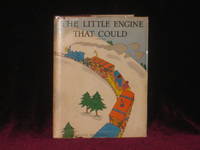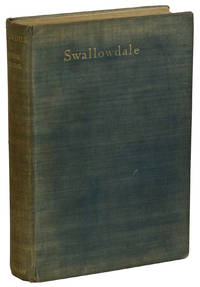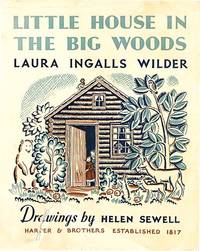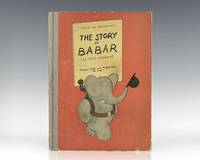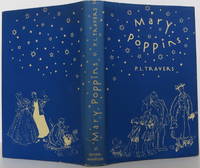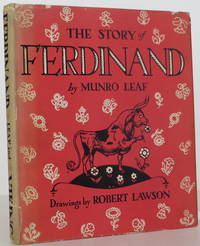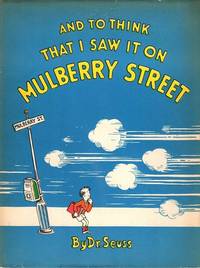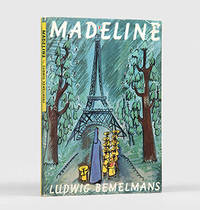Children's Books 1930-1939
-
The Little Engine That Could by Watty Piper
The Little Engine That Could is an American fairytale whose authorship, like other fairytales, is not attributed to a single person, but rather was retold and reprinted over the years by many. The story gained popularity and became a classic children's book in 1930 when it was published by Platt & Munk under the pen name Watty Piper. An earlier version of the story was printed in the New York Tribune in 1906, and in the same year in a Sunday School publication Wellspring for Young People under the title "Thinking One Can." The 1954 Platt & Munk version with illustrations by George and Doris Hauman is the best-known version of this book.
-
Swallowdale by Arthur Ransome
Published in 1931 by Jonathan Cape in London, this is the second book in the Swallows and Amazons series by Arthur Ransome, begun in 1930 with Swallows and Amazons. The story revolves around the outdoor play of two families of children, the Walkers who sail a borrowed dinghy named Swallow, and the Blacketts, who sail a dinghy named Amazon. Swallowdale involves more camping in the Lake District than sailing, and the title comes from a beautiful valley the children find and explore.
-
Little House in the Big Woods by Laura Ingalls Wilder
The first book in the famous Little House series, Little House in the Big Woods was published in 1932 by Harper & Brothers. An autobiographical children's novel based on Wilder's early childhood in the early 1870s near Pepin, Wisconsin, the book portrays pioneer life and focuses mainly on the homesteading skills her family relied on to survive.
-
The Story of Babar the Little Elephant by Jean de Brunhoff
First published in France in 1931, Histoire de Babar, tells the story of an elephant named Babar who leaves the jungle to live in the city after his mother is killed by hunters. Upon returning home he is crowned King and imparts the lessons he has learned from his travels to the other elephants. The story was fashioned from a bedtime tale the author's wife, Cecile, told to their children. A.A. Milne, creator of Winnie-The-Pooh, wrote the preface to the English version of The Story of Babar the Little Elephant, published in 1933 by Methuen in London, and Random House in the US. De Brunhoff followed the success of the book with six others before his death at the age of 37 from tuberculosis. His brother published two subsequent Babar stories that de Brunhoff had written posthumously, and after World War II de Brunhoff's son, Lauren, who had colored the illustrations of his father's previous works, added to the series.
-
Mary Poppins by P.L. Travers
Written by P.L. Travers and illustrated by Mary Shepard, Mary Poppins tells the tale of a magical English nanny who pops into Number 17 Cherry Tree Lane to care for the Banks children, carried by her umbrella along the East wind. At the end of the story, after many fantastical adventures with their stern governess, Poppins ‘pops' out again on the West wind. The first in this series of eight books, Mary Poppins was published in 1934, and the seven subsequent novels that followed were published all the way through 1988. In 1964 Disney made a movie composed out of the first four of the books of the series, starring Julie Andrews and Dick Van Dyke.
-
National Velvet by Enid Bagnold
First published in 1935, National Velvet is the story of a 14-year-old girl named Velvet Brown, a teenager in the late 1920s, living in a small coastal village in Sussex, England. Velvet is a shy child who trains and rides her horse, named The Piebald, to victory in the Grand National steeplechase.
National Velvet was made into a very successful film in 1944 starring a twelve-year old Elizabeth Taylor as Velvet.
-
The Story of Ferdinand by Munroe Leaf
The Story of Ferdinand is about a bull who would rather smell flowers than fight other bulls. Immediately popular, the first print run by Viking Press sold 14,000 copies at $1 each. The following year sales increased to 68,000, and by 1938 it was selling 3,000 copies a week - outselling Gone with the Wind (which had won the Pulitzer in 1937). The story is often seen as a political symbol and was banned in many countries including Spain. Hitler ordered it to be burned in Germany, and after the Germans were defeated in WWII 30,000 copies were printed and handed out to German children as symbols of peace. A signed first edition sold for $16,500 in 2014.
-
The Hobbit or There and Back Again by J.R.R. Tolkien
The Hobbit, or There and Back Again, is a fantasy tale of the hobbit Bilbo Baggins epic quest to gain treasure and defeat the evil dragon Smaug. Inspired by mythology and classic literature such as Beowulf and Grimm's fairy tales, the story may have originated from bedtimes stories Tolkien told to his own children. The book came by chance to the attention of an employee of the London publishing firm George Allen & Unwin in 1936, and after Unwin's son reportedly enjoyed the book the firm decided to publish it. Tolkien himself prepared the original illustrations, drawing over 100 of them before realizing they would have to be greatly reduced (you can see those illustrations in The Art of the Hobbit, published by Houghton Mifflin Harcourt in 2012). By April of 1937, he had submitted his draft as well as the illustrations and now-iconic dust jacket. The first edition of The Hobbit was published on September 21, 1937, with a first printing of just 1,500 which sold out by December. The first edition included a frontispiece and nine other illustrations by Tolkien, including maps. After the success of The Hobbit, Tolkien's publisher requested he follow it up with a sequel, which he worked on from 1937-1949, much of it during World War II. It developed into a much larger work, known as The Lord of the Rings, and due to high publishing costs during the 1950s, it was published in three parts in 1954-1955.
-
And to Think That I Saw it on Mulberry Street by Dr. Seuss
Seuss' first published children's book almost didn't happen: after being rejected by 27 publishers Seuss had decided to burn his manuscript in the incinerator of his apartment building. As he was walking home he ran into an old friend from Dartmouth College, Mike McClintock, who had just started a job as an editor in the children's section of Vanguard Press. The two signed a contract that day that started Seuss' long and prolific career as a children's writer. Seuss himself stated "If I had been going down the other side of Madison Avenue, I'd be in the dry-cleaning business today." And to Think That I Saw it on Mulberry Street follows a boy named Marco, who describes a parade of imaginary people and vehicles traveling along a road, Mulberry Street, in an elaborate fantasy story he dreams up to tell his father at the end of his walk. However, when Marco arrives home he decides instead to tell his father what he actually saw—a simple horse and wagon.
-
Pumpkin Moonshine by Tasha Tudor
Pumpkin Moonshine was the first book by Tasha Tudor, who went on to write and illustrate over 100 more books for children during her lifetime. Born to a famous portrait painter, Tudor's own watercolors illustrated notable children's books for decades, and she went on to win multiple awards, including Caldecott Honors for Mother Goose (1945) and 1 is One (1957). Pumpkin Moonshine is the story of a little girl who finds the biggest pumpkin to carve into a jack-o-lantern (also known as a pumpkin moonshine) for Halloween, but first, she must get it home.
-
Madeline by Ludwig Bemelmans
Madeline, the first of six books written by Ludwig Bemelmans revolving around a brave little girl in a French boarding school, was published by Simon & Schuster in 1939. The Madeline stories were Bemelmans most popular works, and the first book won a Caldecott honor. Bemelmans was born in Austria-Hungary but became a US citizen at the age of twenty. He is said to have reimagined his own childhood, which was quite traumatic, into the classic children's book. Madeline, who isn't scared of anything, and even makes a trip to the hospital a grand adventure, has remained popular for over 75 years.
Subscribe
Sign up for our newsletter and receive coupons via email.

Author Bio: Amy C. Manikowski is a writer, bookseller, trail-diverger, history buff, and pitbull lover. She graduated from Chatham University with an MFA a while ago, and after wandering aimlessly settled in Asheville NC.
